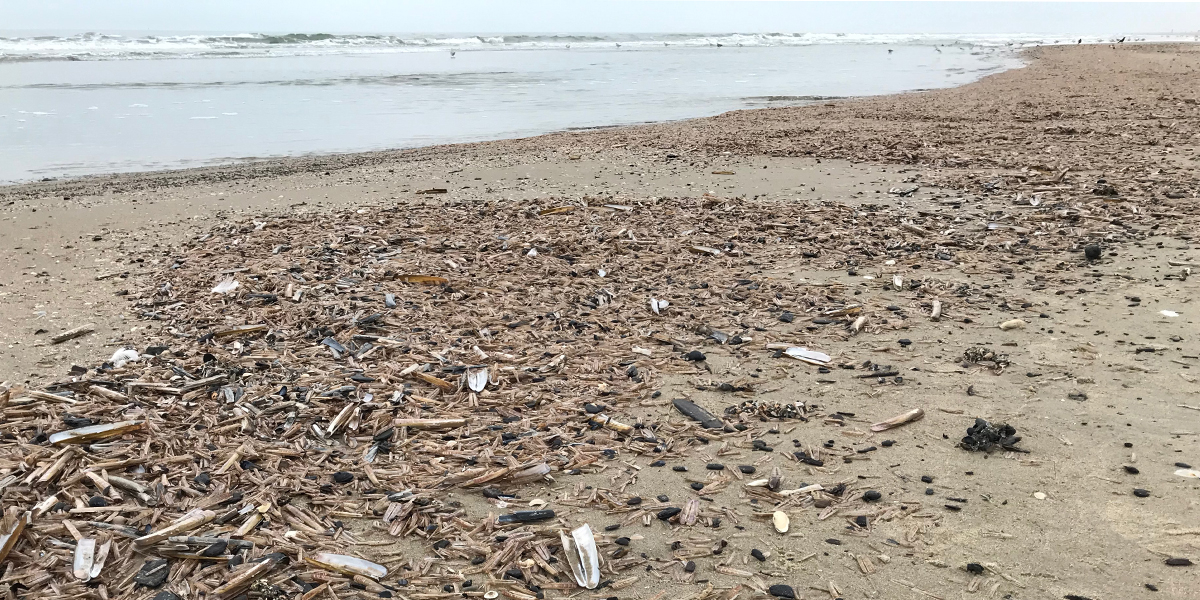Invasive razor clam 'wolverine' of the western Wadden Sea

Efficient filter feeder
The American razor clam, also known as the Atlantic jackknife clam, stumbled upon an advantageous new location on the Balgzand, in the utmost Southwest of the Dutch Wadden Sea. Philippart: ‘This super-efficient filter feeder settled down on the relatively turbulent edges of the intertidal flats, which at the time no other species inhabited. Here, the water flows along from deeper parts of the Wadden Sea and passes these edges first. The American razor clam was sitting first row to filter the planktonic algae from the water.’
A recent analysis of the mudflat's ecological network, based on fourty years of monitoring, proves that the invasion of the mollusc influenced the local food web more than other newcomers like the Japanese oyster. The American razor clam – not to be confused with native species of razor clams - reached the Wadden Sea from North-America during the 1970s and was first found on the Balgzand in 1984. Twenty years after this first observation, there was a turn in the food web: the American razor clam suddenly started an exponential growth. In 2006, the species reached a peak in biomass, after which it declined again. ‘During the first decade of this century, the American razor clam was responsible for 45 per cent of the total consumption in the food web’, says Philippart.
Short-circuit in the food web
In the 1980s and 90s, before the upswing of the American razor clam and the Japanese oyster, much of the carbon fixed by algae was pushed forward to fish and birds through the system of 'eat and be eaten'. After the arrival of the invasive clam, which only a few fish and bird species managed to use as food, the transit of carbon to the rest of the food web came to a halt. Philippart amplifies: ‘American razor clams were wolverines themselves, but almost no prey. The only ones that ate them were bacteria, eventually, after their deaths. So, at the time, the American razor clam, caused a true short-circuiting of the food web.’
Publication
Impacts of macrozoobenthic invasions on a
temperate coastal food web
Alexa Sarina Jung, Henk W. van der Veer, Catharina J. M. Philippart, Andreas M. Waser, Bruno J. Ens, Victor N. de Jonge†, Ulrike Schückel
Marine Ecology Progress Series, Vol. 653 (2020)
DOI:10.3354/meps13499
Amerikaanse ‘voordringer’ als veelvraat in Waddenzee
Nederlandse versie van het bericht